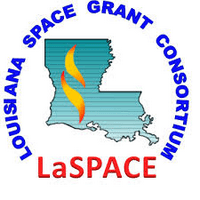Louisiana Space Grant Consortium
Scientific Ballooning at LSU, Guzik

LaACES was initially established in 2003 in response to a growing concern that the NASA aerospace industry and general STEM workforce was rapidly aging and the number of U.S. citizens training to become scientists and engineers was in steady decline. The LaACES program exposes students to the aerospace project development life cycle using the design, fabrication, testing, and operation of small payloads (i.e. ~500 grams) launched on a latex sounding balloon vehicle which carries these experiments to the edge of space (~32â35 kilometers altitude) out of Columbia Scientific Balloon Facility, a NASA facility in Palestine, TX. Students universally acclaim this launch trip as the highlight of the year, because it enables them to fully appreciate the utility of what they learned as no other single event can. In addition to the core team at LSU, we had participating student teams from 3 affiliate campuses (LaTech, McNeese, & Delgado Community College) and we hosted a faculty member from another campus, Southeastern Louisiana University in Hammond, LA, who has subsequently implemented a LaACES program at his institution.
The High Altitude Student Platform (HASP) is meant to accommodate more complex experiments. HASP is designed to carry up to twelve student payloads to an altitude of about 36 kilometers with flight durations of 15 to 20 hours using a small volume, zero pressure balloon. The payloads carried by HASP will be designed and built by students and will be used to flight-test compact satellites or prototypes and to fly other small experiments. The HASP flight program is supported by the NASA Balloon Program Office (BPO) and the Louisiana Space Consortium (LaSPACE). Currently, HASP flies once a year in September from the Columbia Scientific Balloon Facility (CSBF) base in Fort Sumner, New Mexico. Typically, HASP requests student payload flight applications in the fall prior to the flight year. These applications are then reviewed by both the BPO and LaSPACE, and a selection is made by January of the flight year. Student payload integration with HASP is then accomplished during July / August just prior to the flight. Once selected as a HASP participant student teams are not charged for the flight. However, student teams must provide their own funding to support payload development and integration and there are a few document âdeliverablesâ that the teams must supply.
LaSPACE at LSU provides technical and management support to both the state-wide LaACES program, the nationwide HASP program, formal oversight of any LaACES or HASP projects being developed at LSU, and management of Louisianaâs participation in any national flight programs.

